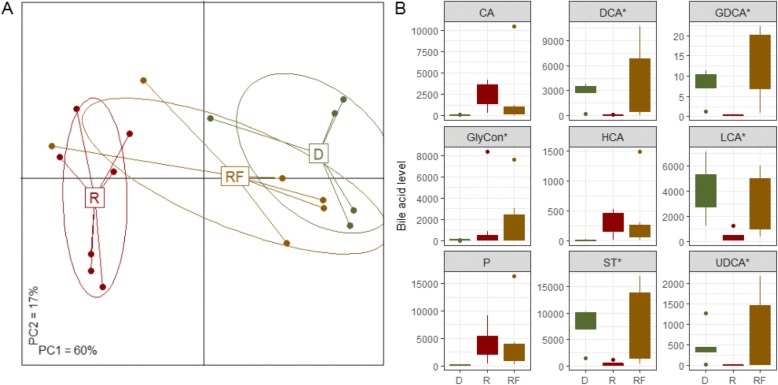Fig. 3.
FMT restores faecal bile acids to more donor-like levels. a: Overall, the bile acid levels are more similar to those seen in the donor after FMT compared to before transplant. Shown is the PCoA (Spearman rank distance) of the bile acid levels associated with CDI (“R”, n = 7), post-FMT (“RF”, n = 6) as well as FMT-donors (“D”, n = 5). The bile acid profile before FMT is statistically significantly different compared to the microbiota of the donors (P < .01, PERMANOVA) but assumes a more donor-like profile after FMT (P > .1 for “RF” vs “D”). b: Many bile acids are restored to donor levels after FMT. Shown are boxplots for bile acids with differential abundance (P < .1) in patients with CDI (“R”) compared to the donors (“D”). Most of these faecal bile acids were not differentially abundant after the FMT procedure (“RF”) compared to the donors, indicated by asterix. D: donor, R: recipient, RF: recipient post-FMT, CA: DCA:, GDCA:, GlyCon: merged glyco-conjugated bile acids, HCA:, LCA:, P: merged primary bile acids, ST: merged secondary and tertiary bile acids, UDCA:, LCA:, DCA:, CA:, HCA:,GDCA

